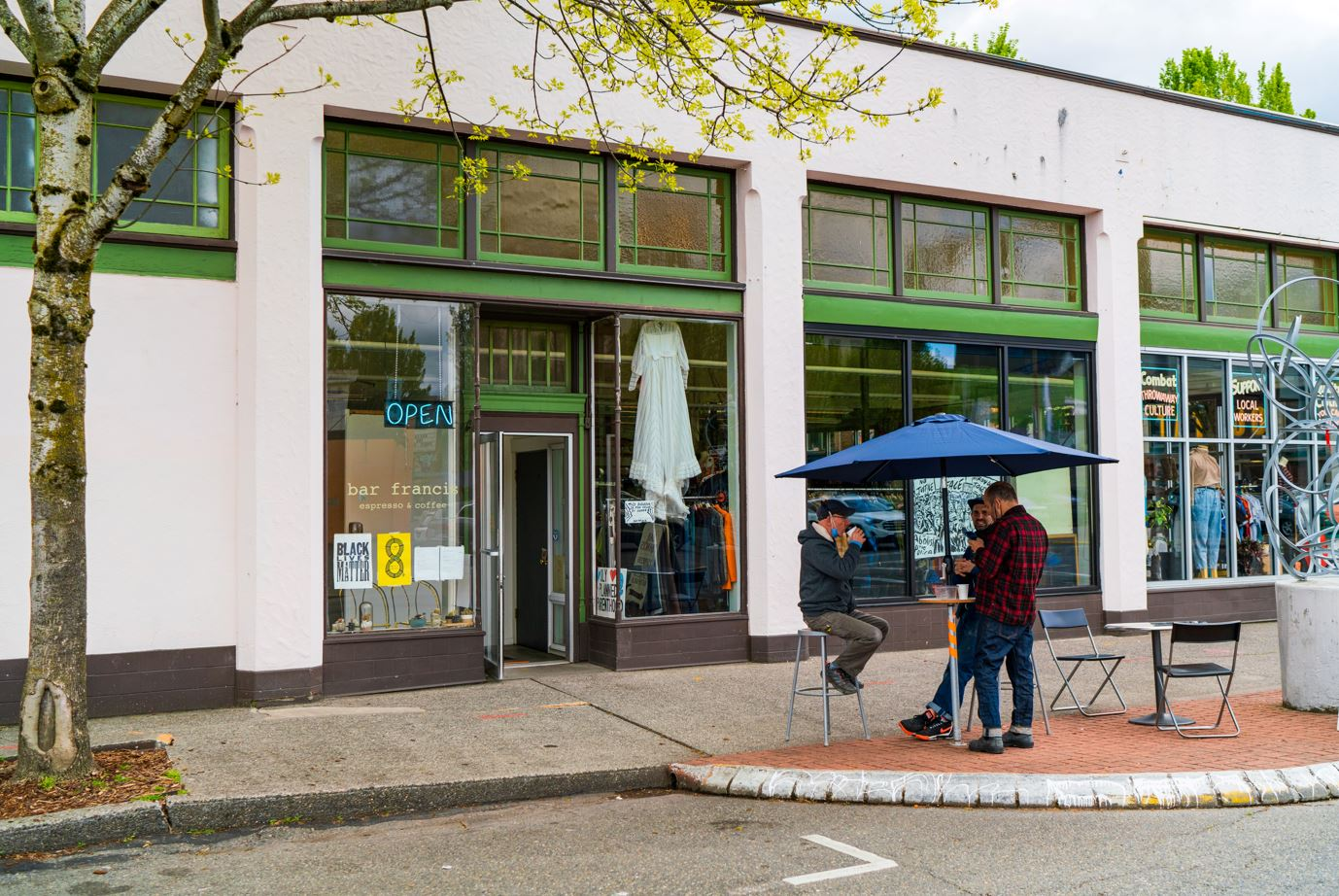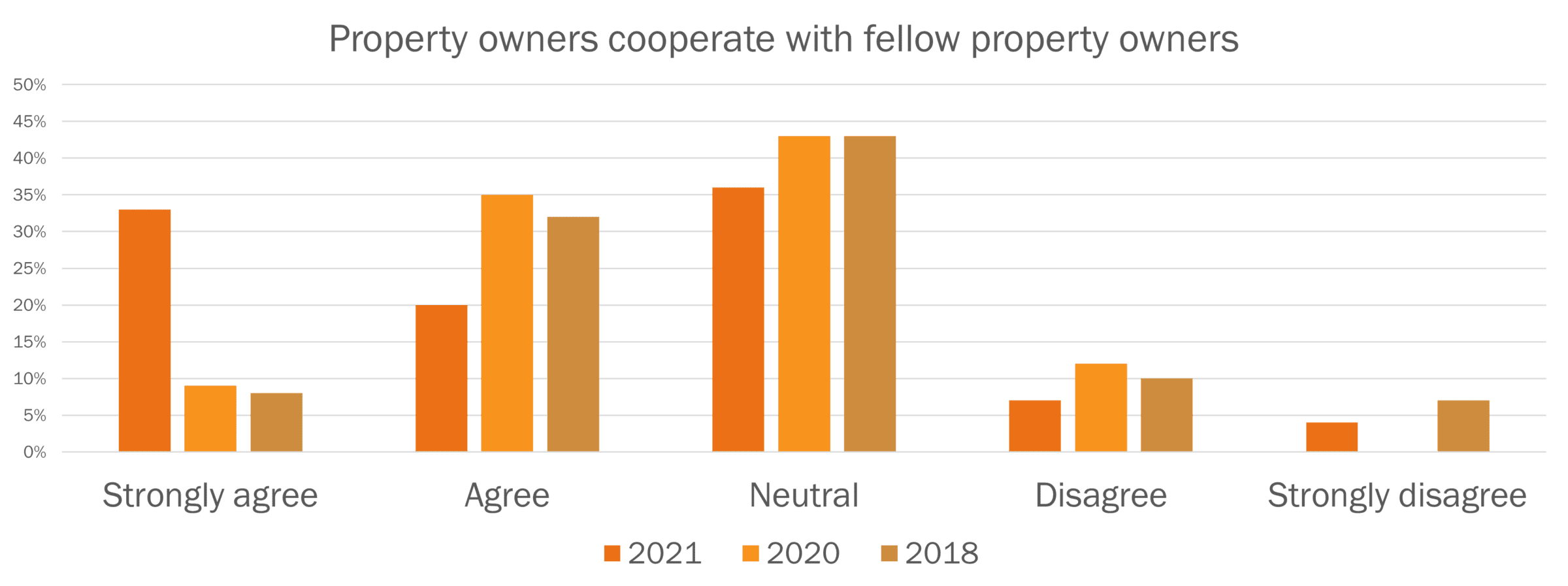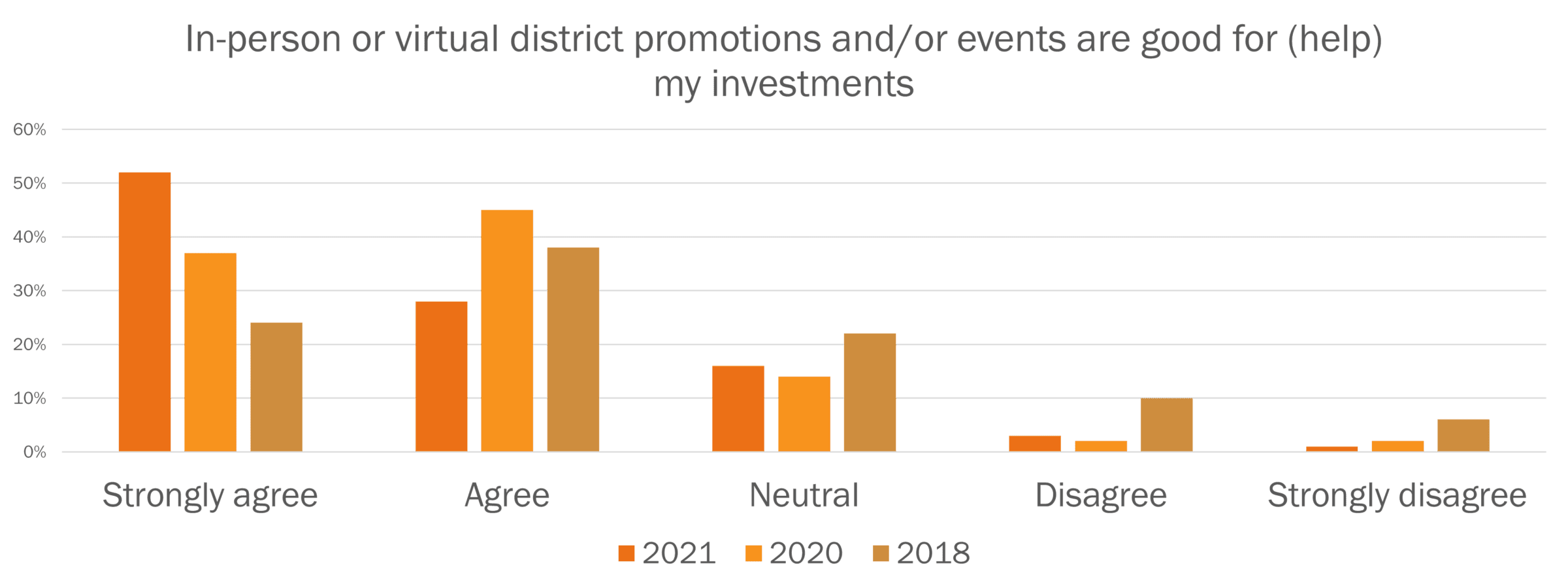Main Street District Trends: Confidence and Comradery

By Luke Hallowell, Economic Vitality Specialist, Washington Main Street
Since 2018, the Washington State Main Street Program has been sending out a District Trends Survey to business and property owners as a method of checking the vitals of our Main Street Communities and to see how they are responding to their changing environments. We feel fortunate to have a pre-Covid baseline of our data, because it provides us a window into how Main Street organizations have responded and continue to respond before, during, and emerging from the pandemic.
1. In it together. We’ve seen some very interesting shifts in the data, especially with regards to the way Main Street districts see themselves. We saw a 20% growth in respondents who “Strongly Agreed” in seeing increased collaboration between businesses, property owners, and tenants. One downtown business owner shared the following: “I think that there has been a need to collaborate and work together to find creative solutions to drive further revenues during all the shutdowns. This was incredibly evident between some landlords and tenants but also very prevalent in merchant-to-merchant interaction.” Another shared that, “Business owners are in this together! We see the advantages of working together to achieve so much more for our community.”

2. Promotions matter. A less surprising shift was seeing that twice as many respondents strongly agreed that in-district promotions and events are good for their Main Street investments, as compared to levels prior to the pandemic. When asked why this shift occurred, businesses cited the need for people to feel a sense of freedom and people having a desire to support local and explore any new businesses that were created. Promotions were credited to “help give people an additional reason” to go out and reconnect with family and friends. Others cited that “people have been craving the special events” and that events are playing a large role in Main Street’s post-pandemic rebound.

3. Steady goes it. Despite the incredibly volatile markets elsewhere, folks on Main Street showed a high level of confidence in the present and future value of their investment in downtown. Respondents cited the increase in people choosing to show up and support downtown, crediting the work of local Main Street organizations in promoting downtown and sharing the community pride and sense of place that can be found on Main Street. To quote one business owner: “People want to see their community flourish. People want to interact. Downtown districts are one of the best possible places for this to occur. Having an active downtown association who cares about our community and our merchants is key and because of the work that they do I have never had a worry about our investment into our downtown district.”
4. Friendly FTW. Lastly, since 2018, we saw a 15% growth in respondents indicating their local city and downtown districts are business-friendly. Respondents shared their experiences working with their local city government, and one described them as “amazingly business-friendly,” while another cited the friendly relationship between downtown businesses and credited the city for accommodating to support the growth of businesses in the downtown district.
As American entrepreneurs consider taking the plunge to launch new businesses post-pandemic, “location, location, location” continues to be the golden rule. With steady investments, built-in support systems, and a customer base already attached to and in the habit of heading downtown – Main Street districts are ripe for continued investment in the years ahead.
**Washington Main Street received responses from ≈1% of the business and property owners in designated Main Street Community districts. Washington Main Street uses this annual trends survey to inform our work and thanks survey respondents for their contributions.
Photo courtesy of Olympia Downtown Alliance.
